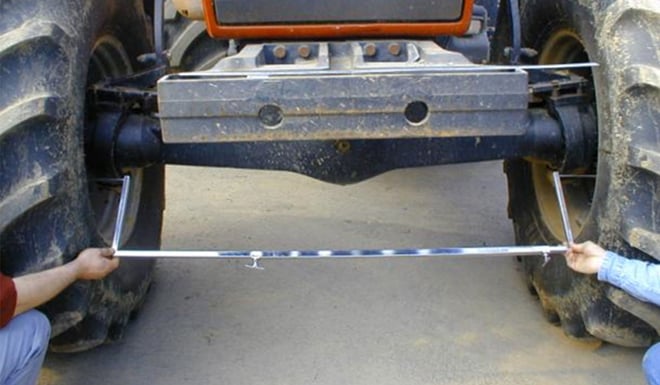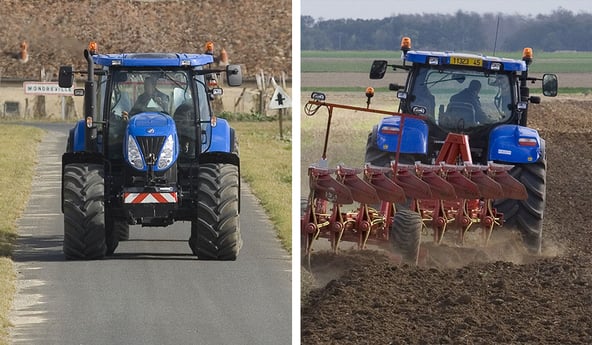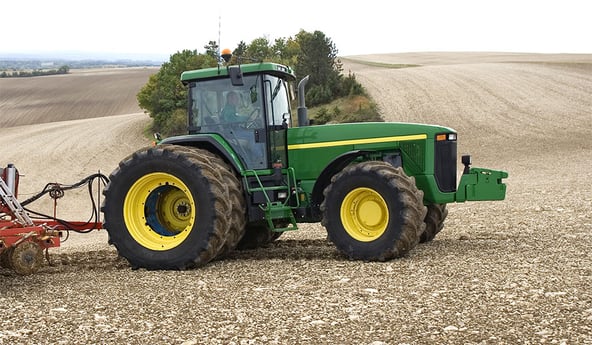There are many possible causes of wear to your agricultural tyres, some of the most frequent being geometric errors: it is these errors that lead to most rapid wear of the rubber in your tyres. To ensure your settings are spot-on, you must know how to establish whether it’s a problem of misalignment or camber and what the difference is between the two.
Regular check-ups will allow you to preserve your agricultural tyres and may help you save thousands of euros by keeping them for longer.
An agricultural tyre may face different shocks when used in the fields, when going too fast from road to field, when crossing over ruts, when driving in tracks that are too deep…. These manoeuvres, if repeated too often, can lead to a progressive deregulation of the geometry of your agricultural tyres.
You must adjust your settings if you notice any of the following 5 problems:
- You have identified anormal wear on one side of the tyres
- Your tractor is pulling slightly to the right or to the left
- You feel stronger steering resistance after a right bend than after a left bend or the other way around
- You are obliged to correct a slight steering pull because your tractor veers to one side or the other
- On the road, you feel an abnormal vibration when you increase speed
These 5 problems are the sign of a geometry error, but to make the right adjustment, you need to know the difference between camber and parallelism.
Camber
Geometry: dealing with a CAMBER PROBLEM in agricultural tyres
This consists in adjusting the angles between the wheels and the road, or the angles between the wheels themselves to keep them parallel.
Camber is quite specific: it is the tilt of the wheel in relation to the ground. Ideally, your tyre should be perfectly vertical and therefore as flat as possible on the ground.
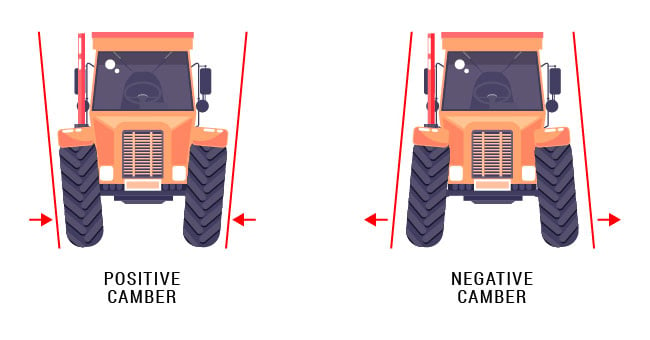
POSITIVE CAMBER
When the top of the wheels of the tractor incline outwardly from the centreline of the chassis.
→ In this case, the tyre is worn on the exterior part of the tyre like in the photo above.
NEGATIVE CAMBER:
When the wheels incline inwards towards the centreline of the chassis.
→ In this case, the wear appears on the interior edge of the tyres.
Parallelism
Correcting errors in tractor tyre PARALLELISM
Parallelism involves adjusting the wheels to ensure their alignment with respect to the centreline of the axle. Ideally, your tyres should be perfectly parallel to your tractor.
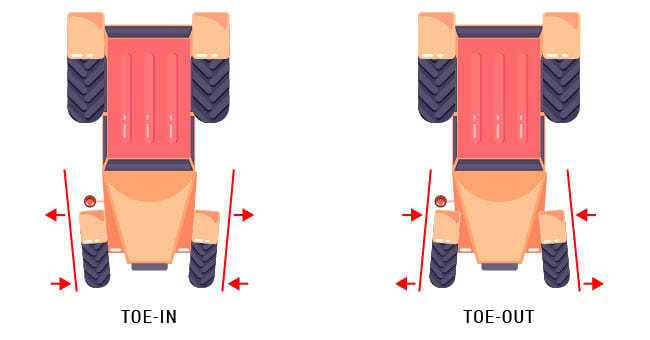
Toe-in
Toe-in is when the front of the tyres point inwards towards each other with respect to the centreline and horizontal axis of the tractor.
In the case of toe-in, there will be wear to the outside edge of the tyres but generally more wear on the outside right side. This is due to the slope of the road (cambered surface) which requires correction of steering towards the left.
Toe-out
Toe-out is when the front of the tyres point outwards away from each other with respect to the centreline and horizontal axis of the tractor.
In case of toe-out, there will be wear to the inside of the tyres but predominantly to the inside right side, again due to the (cambered) slope of the road.
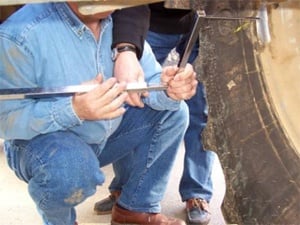
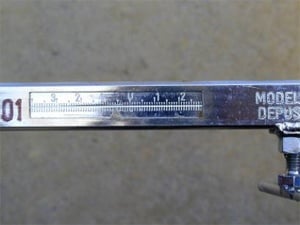
Check the geometry yourself
To learn more about ways to increase your farm’s productivity, bridgestone-agriculture has created a comprehensive eBook on the topic which is available for you to download for free:
Bridgestone-agriculture Blog is written and administered by tractor tyre experts who are available to provide you with advice on agricultural tyres. They will help you to maximise your productivity with information on all things relating to tyres: inexpensive tractor tyres, technical data for agricultural tyres, solutions for avoiding soil compaction, sprayer tyre pressure, why and how to ballast your tractor tyres, when to use dual-wheels, the mechanical causes for abnormal wear, discounted agricultural tyres, etc...
Most people who read this article have also read some of the following articles:
This information is intended only to make you aware of the technical and functional aspects of agricultural tires and their use. It does not allow you to make a judgment or a definitive conclusion on a given problem. Only your agricultural tire expert is able to make a technical assessment and take a final decision, case by case.
Leave a
commentary
Your email address will not be published.
Required fields are indicated with *


